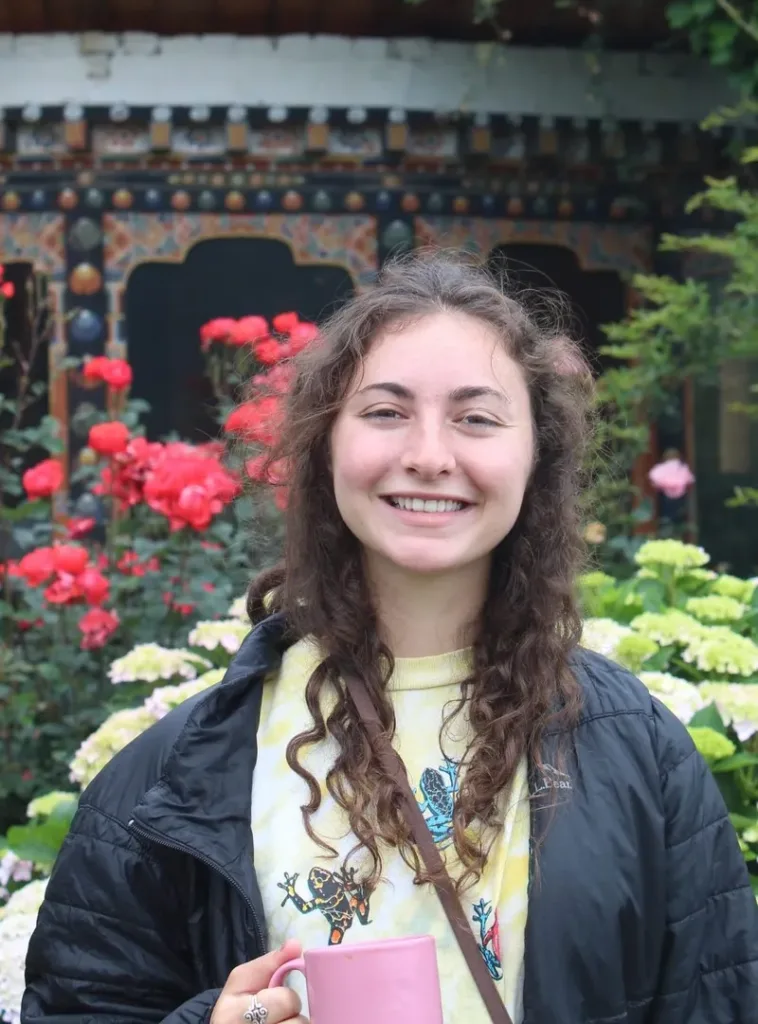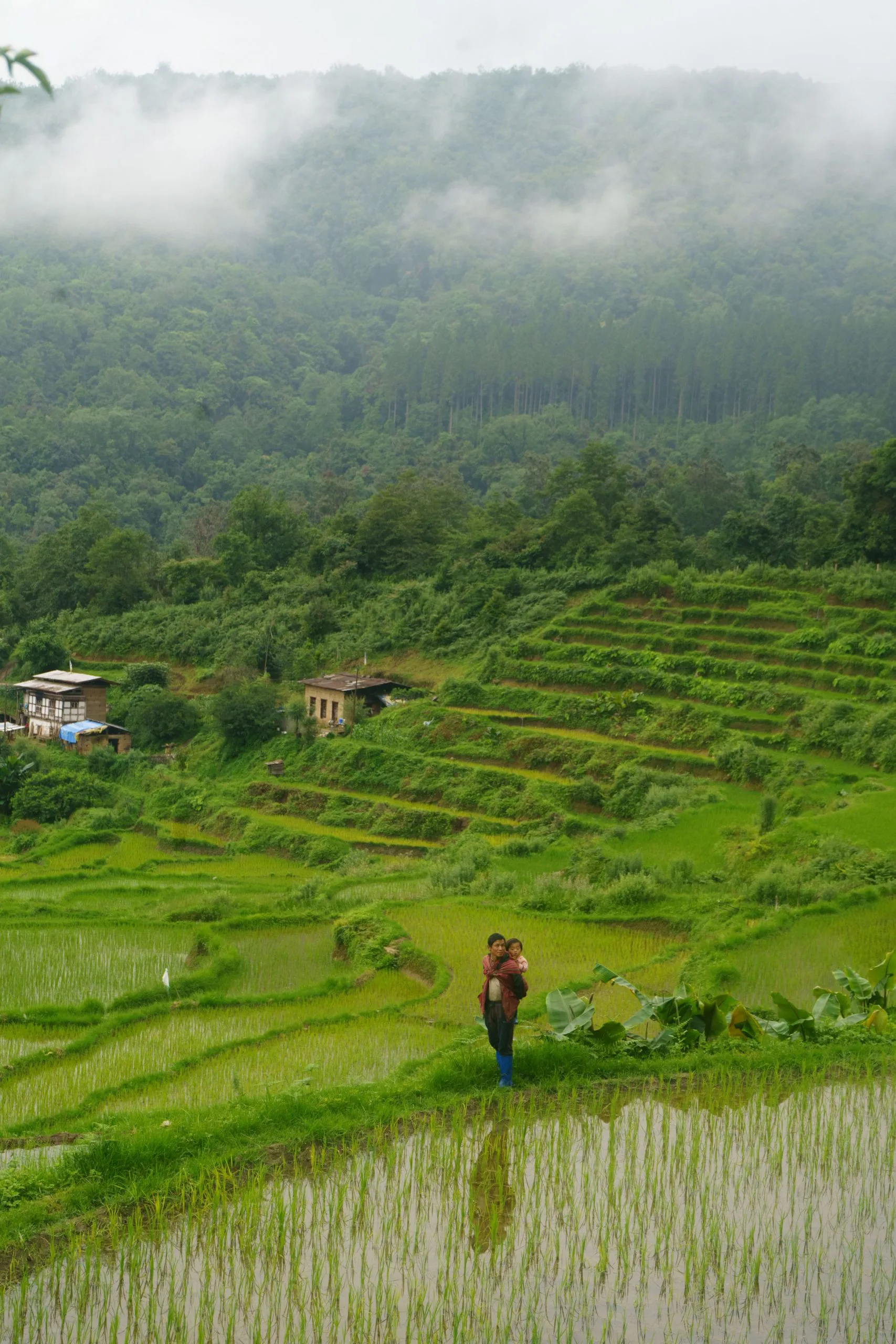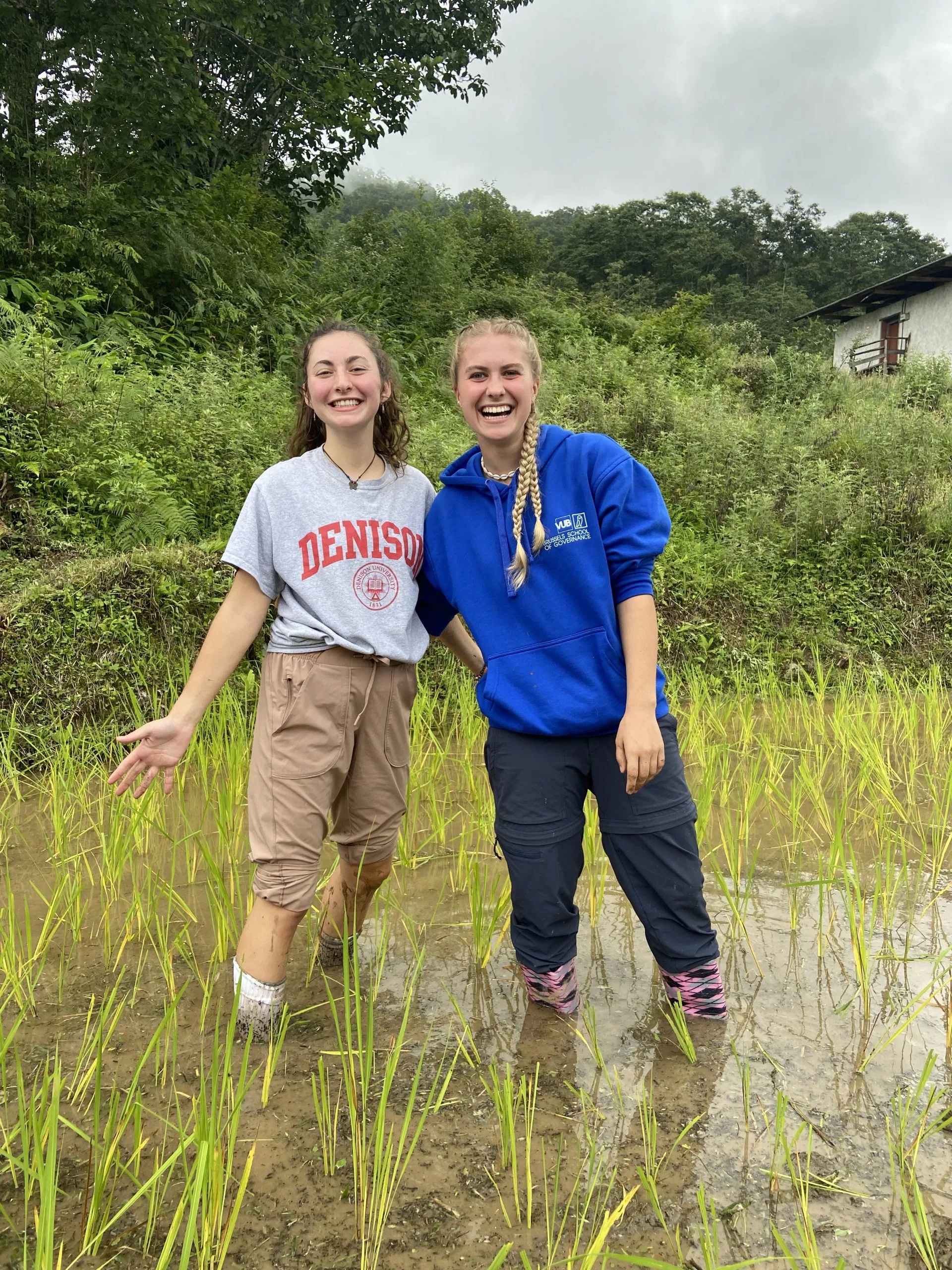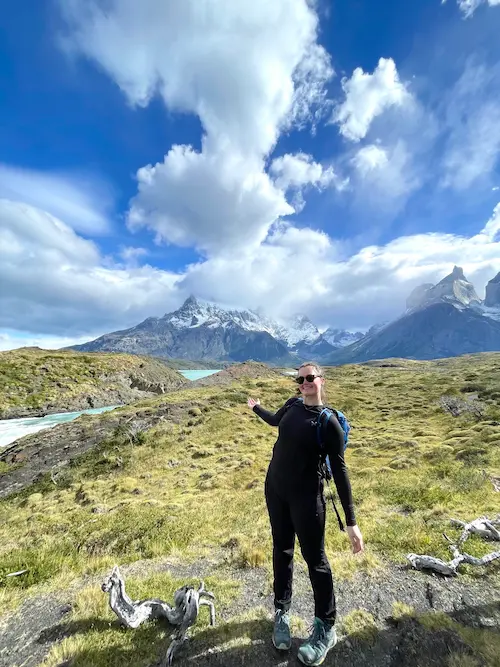
By: Eva Coleman
New Appreciation for Rice
With the wind, the water would ripple, and so would the rice stalks… I will never forget the image of the green waves making their way across the valley.

Photo of Paro on our way back to the SFS Center. Shows the view of the rice fields with the mountainous background.
I didn’t know what to expect when I first arrived in Bhutan. In all my research, I never read anything that explained to me how I would feel entering Bhutan. Flying into Bhutan, you felt like the wings of the plane would touch the mountain peaks. Instantly I noticed the kindness in each person, the boldness of the animals, and the wildness of the mountain forests. The SFS center, which the students this summer called ‘the Palace’, sits on a hill overlooking the town of Paro. Some elements of Paro felt very familiar to me; children getting out of school, store clerks sweeping their steps, teenagers with their Nikes, ice cream scoops on hot days. Yet, all of this was mixed with things I had never seen before. Cows and horses walking down the main street in line with the cars, chilies drying in patches on the sidewalk, monks getting their groceries, dozens of dogs strolling across the street like children, and the presence of rice fields sprawled out in every direction with towering mountains swallowing up the city.
Looking down from the Palace, the rice looked like overgrown fields that I am used to seeing at home but brighter. When the wind blew this whole picture changed, as the fields became fluid and moved like water. I was in Bhutan during the rice growing season, so the rice stalks were about 10 inches out of the water. With the wind, the water would ripple, and so would the rice stalks. When I watched this, I would think of a green ocean. I will never forget the image of the green waves making their way across the valley.
One of my favorite parts of this program was participating in homestays during our excursions. Just outside of Punakha, we stayed with a lovely couple that opened their home to our entire group, and in the valley of Phobjikha, I was able to stay with four other students with a woman and her grandson. In Punakha, the family allowed us to go into one of their rice paddies to learn how to plant rice, a very diligent task. Waking up in the morning with a steaming bowl of rice, I began to understand how much effort was done to get this rice on the table. I could look outside the window and see where the rice came from, where it dried, and the kitchen they prepared it in. At home, I never felt a connection between myself and the food that I ate. Since this experience, I often think about the process that it took for the food to get on my table, and I try to be more thankful for the labor that is often not seen.

Homestay family’s rice patties outside Punakha. Photo taken by Emma Gellman.
We were also able to visit the Bhutanese Agricultural Society in Bajo. Here, we learned how Bhutan is working towards a completely organic agricultural system. I saw how dedicated they were to use every piece of rice to help with food production and eliminate waste. I couldn’t help but imagine how much food waste I participate in at home, and I started to think of ways that I could adopt some of what I was learning in my daily life.
While I have spoken a lot about rice, the best experience that I had during my summer was my directed research. I was in a team of three girls and our professor studying phytodiversity along an altitudinal and anthropogenic disturbance gradient. The hike up to Bumdra (an area high above Tiger’s Nest) was one of the most difficult day hikes I have ever done, but it was the most rewarding. Our research took three days which consisted of laughing, counting, measuring, and finding the best spot for our lunch breaks (rice included). I feel so incredibly blessed to have had the opportunity to aid in Dr. Purna Chhetri’s research.

Photo with Dr. Purna Chhetri during directed research in Bumndra.
Now as I sit here finishing this blog, I have caught myself again staring at the green waves of rice moving towards the mountains. The Palace may not have the best Wi-Fi, but it sure does have a once-in-a-lifetime view of the beautiful nature and culture of Bhutan.
__________
Curious about the SFS Bhutan Center? Click here to read about why we’re based there, our environmental research focus, how we support the local community, and even take a tour of the Center.

Photo of our rice planting lesson.

Photo of me from our day trip to Tiger’s Nest.
Related Posts


